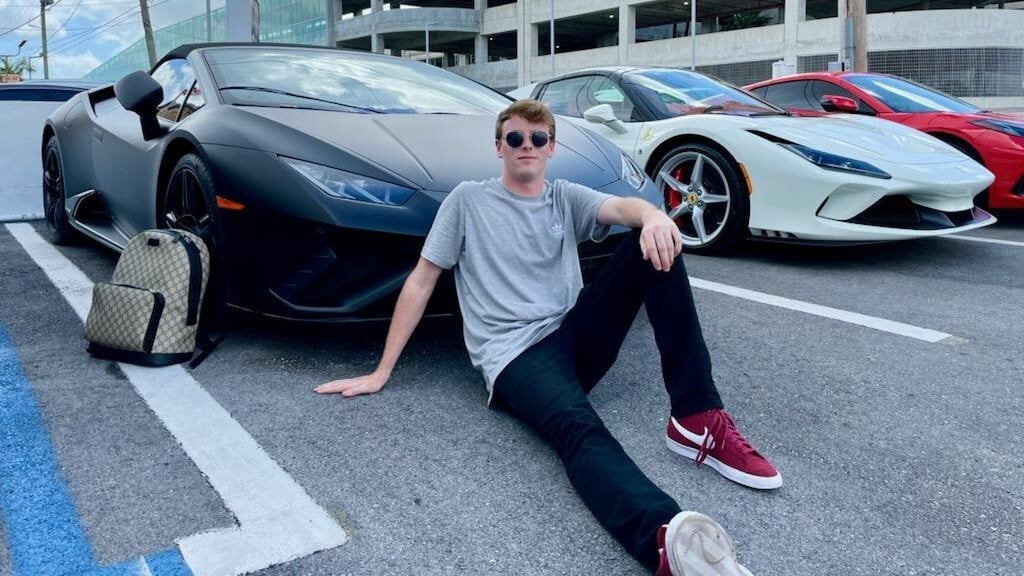Over the last decade, the luxury car market has undergone a radical transformation. Once defined by engineering precision, heritage, and prestige, today's luxury vehicle landscape is driven by entirely different forces: social media virality, influencer validation, aftermarket customization, and the desire to be part of an exclusive cultural narrative.
This isn’t just a shift in aesthetics or advertising tactics—it’s a fundamental rewiring of how luxury cars are discovered, evaluated, and purchased.
As someone who’s worked with creators and brands at scale, I’ve seen firsthand how the power dynamic has flipped. Today, luxury is shaped by the feed. What gets shared, customized, and reposted defines what matters.
From Craftsmanship to Cultural Capital
Legacy automakers once earned their place through decades of racing dominance, engineering breakthroughs, and timeless design. Brands like Mercedes-Benz, BMW, and Rolls-Royce held immense weight in buyers' minds because of their lineage. A luxury car purchase was a nod to tradition and taste.
Today, that tradition holds less sway. In its place is something more ephemeral but no less powerful: cultural relevance, which is far more influential in making purchasing decisions. The modern buyer is less interested in what a brand meant 50 years ago and more captivated by what a car looks like on TikTok today.
According to McKinsey, 60% of luxury car buyers under the age of 35 cite social media as their primary source of discovery. Instagram Reels, TikTok clips, and YouTube vlogs often showcase customized, modified, or limited-edition vehicles, creating a sense of exclusivity and aspiration. These moments create the "I want that" reaction in real-time, making brand heritage feel less important than the vibe of the vehicle.
Influencer-Driven Decision Making
Gone are the days of brochures and TV commercials. Now, decisions are forged in the comment sections of YouTube reviews and in the likes on an influencer’s post. A 2022 Google study found that 70% of car buyers used YouTube to inform their purchasing decisions. And they aren’t watching brand-produced content—they’re consuming independent reviews, long-term ownership updates, modification guides, and behind-the-wheel diaries from creators they trust.
The depth of content available is staggering:
- “First impressions” videos post-launch
- 6-month ownership reviews
- Year-long breakdowns of pros, cons, and the cost of maintenance
- Modification walkthroughs and before-and-after comparisons
This library of content doesn’t just help inform buyers. It makes them feel like experts before they even step into a dealership. The power of peer-to-peer credibility has never been stronger. And all of that content doesn’t just influence the purchase, it inspires what comes next.
.png?width=450&height=337&name=Soft%20Pink%20Minimalist%20Marketing%20Funnel%20Graph%20(1).png)
Why Everyone Wants the Car No One Else Has
The most-shared luxury vehicles on social media rarely remain stock. Widebody kits, forged carbon hoods, custom wheels, matte paint wraps, and interior LED builds are the new badges of distinction.
This trend has spawned a booming aftermarket economy. According to SEMA (Specialty Equipment Market Association), the automotive specialty-equipment market in the U.S. alone surpassed $50.9 billion in 2023. A significant portion of that spend is on luxury and performance vehicles, where personalization is not just expected—it's essential.
Buyers aren’t just purchasing luxury cars; they’re purchasing the foundation of a digital persona. YouTube and Instagram are filled with creators like TheStradman, DailyDrivenExotics, and Shmee150 who not only show off the vehicle but actively document the process of upgrading, modifying, and transforming it. These journeys build emotional connection, and that connection drives demand.
The Digital Showroom is Always Open
Before purchasing a car, most buyers used to rely on one or two test drives and a brochure. Today, it’s common for consumers to binge-watch 10 to 20 YouTube videos on a specific vehicle before even scheduling a test drive. This includes comparisons, feature deep-dives, and even ownership horror stories.
Google Trends data shows a consistent year-over-year increase in searches for "[vehicle name] review," "[vehicle name] problems," and "[vehicle name] vs [competitor]".
This kind of immersion creates a pre-sale intimacy with the product. People understand what it’s like to live with a car long before they ever touch it. They know about:
- Tech glitches
- Maintenance costs
- Resale value
- How it performs after 10,000 miles
- Which aftermarket mods make the biggest impact
Transparency builds trust. And trust drives conversion. If it’s negative, legacy branding won’t be enough to offset bad social press.
Culture Now Commands the Keys
-1.png?width=441&height=441&name=Untitled%20design%20(15)-1.png)
This all comes down to a core truth: luxury is no longer about exclusivity through price alone. It's about participation in a cultural moment. The cars that win are the ones that align with a lifestyle, a community, or a movement.
Social media has flattened the hierarchy. A kid with 500,000 YouTube followers customizing a Porsche Taycan may wield more influence than a century of brand history. Their experience feels more real, more accessible, and more aspirational.
And this isn’t just hype. Automakers are responding:
- BMW is collaborating with influencers to co-create custom editions
- Mercedes-AMG is working with gaming creators to digitize new car launches
- Rolls-Royce now features bespoke "Inspiration Series" designed in collaboration with artists
Luxury is no longer what the brand tells you it is. Luxury is what the culture agrees it is.
Final Thoughts: Luxury’s New Rules
The shift in luxury car buying is not a fad. It’s a new paradigm. A generation raised on algorithms, content, and authenticity is now the primary buyer. The old rules of heritage, prestige, and tradition no longer hold unless they can translate to cultural relevance in a digital world.
If a luxury vehicle can't dominate social feeds, inspire personalization, and foster real-world community, it may not matter how good the car is. Because in 2025, excellence alone isn't enough.
Today, luxury is seen. It is shared. It is chosen by the scroll.
And that changes everything.


.png?width=300&height=300&name=Minimal%20Photocentric%20Productivity%20Blog%20Banner%20(3).png)

